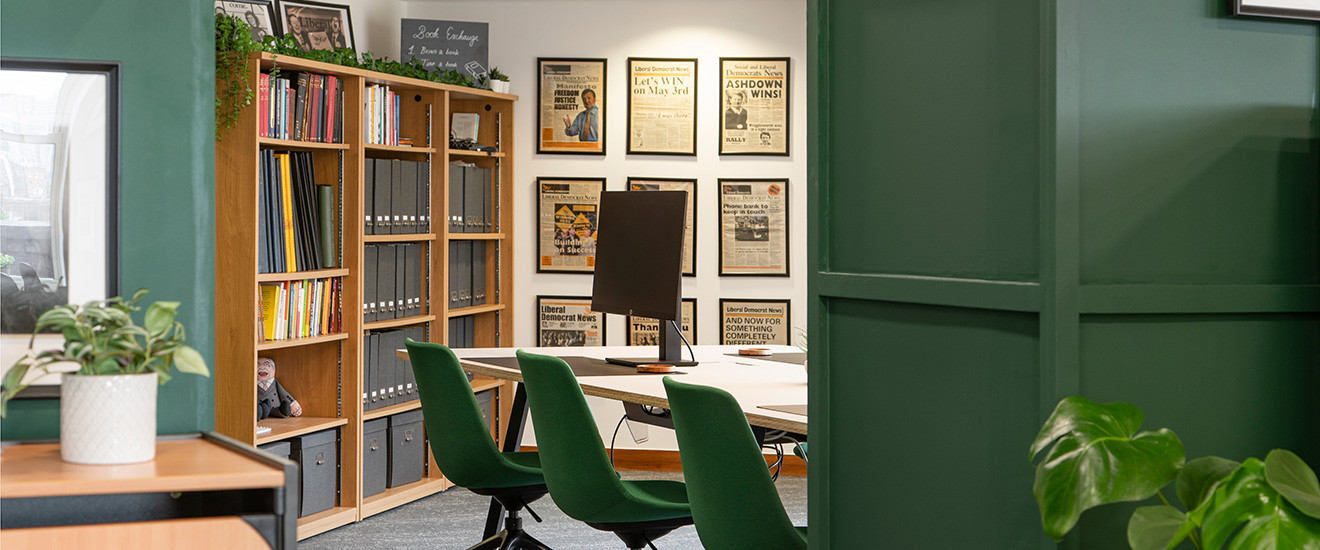Comfort is key: The importance of ergonomics in the workplace
Ergonomic injuries account for 33% of all worker injury and illness cases. Learn all about improving ergonomics in the workplace on the Peldon Rose blog.


The significance of ergonomics in the workplace is steadily increasing: research suggests that on average, most people will spend around 13 years of life at work. For many, a large proportion of this time will be at desks, or various workstations. Wherever we work, it’s important to ensure that our environments are equipped to support us physically. Indeed, as we move towards a world of increased activity-based working, exploring the evolving ergonomics in the workplace has never been more exciting.
What is ergonomics in the workplace and why is it important?
Ergonomics is the study of how equipment or furniture can be designed or arranged in a way that enables people to work more efficiently and comfortably. The question, 'Why is ergonomics so important?' is easily answered by looking at workplace health and safety statistics: According to the US Bureau of Labor Statistics, ergonomic injuries account for 33% of all worker injury and illness cases. Not only that, but research suggests that working in an environment that is physically supportive improves productivity, reduces the risk of error and increases concentration levels. When you’re supported by your surroundings, it’s much easier to fulfil your role to the best of your ability, and to feel comfortable and happy while doing it.
For employers, a workplace designed with robust ergonomic support demonstrates a commitment to employee health and wellbeing. When working from the office, employers will carry out a DSE assessment, to ensure that your working environment is set up to support you physically. However, if hybrid working is here to stay, it’s crucial to make sure that your home workstation also supports the ergonomic requirements of your role, whether you’re working there one day a week or more.
Ergonomics challenges in the ‘home office’
Since the rise of remote and flexible working any of us have neglected the ergonomics of the home office. People have lacked the space or resources to create a workstation to properly support the working day from home. Too often, it is thought that a simple task chair provides a solution to every ergonomic problem, but the science surpasses our seating position. Ergonomics covers posture, lighting, noise, motion or anything else that can have a sensory impact on our surroundings. Here are some factors to consider when working from home:
Seating posture – Try to work with a neutral posture. Whether you choose to sit upright, stand, or work while reclined, maintain a posture that keeps joints aligned, which reduces the stress on your musculoskeletal system.
Work within the ‘comfort zone’ – This can also be called the ‘handshake zone’. If you work in a way that allows you to reach out and ‘shake hands’ with your work, it’ll be easier to maintain that neutral posture, and minimise excessive reach.
Screen time – Most office workers spend the majority of the day staring at one or more screens. After every 20 minutes spent staring at a screen, you should spend 20 seconds staring at something 20 feet away before returning to your computer screen.
Stretch/rest breaks – Dedicating time away from your workstation not only allows for mental respite and recharge, but stretching and moving during the working day will allow workers to identify any pain points, and make adaptations to work settings if needed. Much of our meetings at home are conducted virtually, or on the phone. Why not use that time to pace the room? Increased blood flow also oxygenates the brain, which can lead to new ideas or ‘lightbulb moments’. While in the office, there are many ways to make the workplace more physically active, like implementing an office design that promotes physical activity or using furniture that inspires the workforce to move.
We have successfully executed numerous projects incorporating ergonomic furniture. One example is our office refurbishment for WSS, where we thoroughly implemented ergonomic workstations and cultivated a workspace conducive to agile working.
Lighting – Too much, or too little light can make it difficult to carry out the most simple of tasks, increasing the risk of eye strain or headaches. When working from home, it’s key to try to work in proximity to as much natural light as possible. When this can’t happen, task lighting provides a good alternative, and filters added to computer screens can help to avoid strain caused by glare. Try to match your screen brightness with your surrounding area. If you’re in a dull environment, lower your screen light, and vice versa.
The importance of an individual approach
Every one of us comes in different shapes and sizes, with different likes and preferences. It’s important to examine the ergonomics within the workplace against the range of individuals who operate within it. We need to make sure teams are supported physically as well as emotionally, both in the office and while working remotely.
Are you providing varied and inclusive ergonomic solutions for your people, depending on their needs? Employers have a responsibility to support ergonomics in the workplace as part of best health and safety practice, but each employee also has a responsibility to take care of their own physical working health. Take some time to check your seating posture, or stand to align your spine, and work actively.
Importantly, ergonomic furniture and support in the workplace can combine with beautiful design. Ergonomic design is human-centred and matches functionality with form and ease of use but also enjoyment and pleasure. Wherever you work, your environment should support you to do so happily and healthily.
Last updated: February 2023
You may also like

Start your workplace transformation today.
Your workplace holds enormous potential to improve your business performance. Get in touch today, and we will unlock that potential together.

